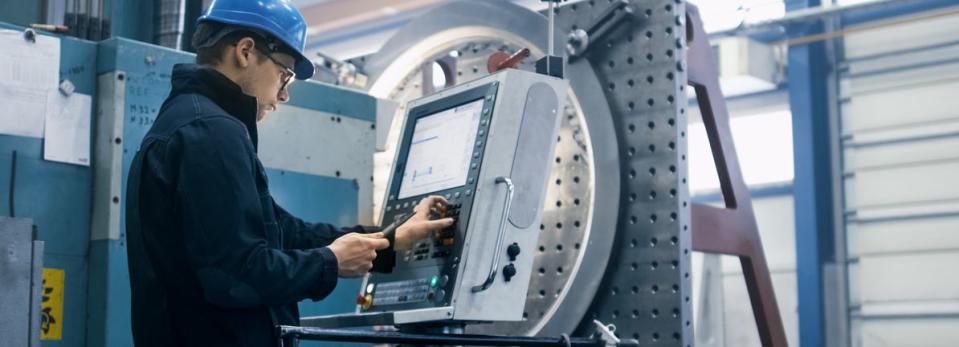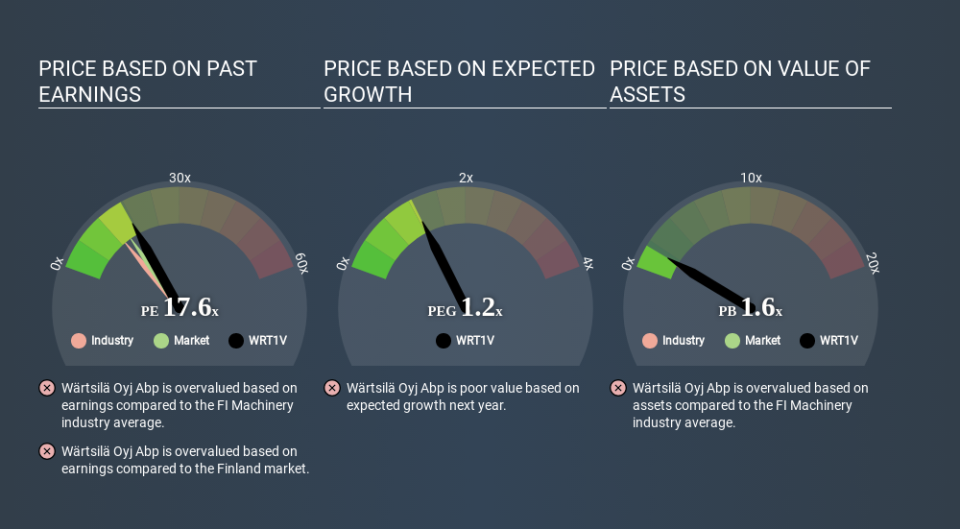A Sliding Share Price Has Us Looking At Wärtsilä Oyj Abp's (HEL:WRT1V) P/E Ratio

To the annoyance of some shareholders, Wärtsilä Oyj Abp (HEL:WRT1V) shares are down a considerable 32% in the last month. That drop has capped off a tough year for shareholders, with the share price down 55% in that time.
Assuming nothing else has changed, a lower share price makes a stock more attractive to potential buyers. In the long term, share prices tend to follow earnings per share, but in the short term prices bounce around in response to short term factors (which are not always obvious). So, on certain occasions, long term focussed investors try to take advantage of pessimistic expectations to buy shares at a better price. One way to gauge market expectations of a stock is to look at its Price to Earnings Ratio (PE Ratio). A high P/E ratio means that investors have a high expectation about future growth, while a low P/E ratio means they have low expectations about future growth.
Check out our latest analysis for Wärtsilä Oyj Abp
Does Wärtsilä Oyj Abp Have A Relatively High Or Low P/E For Its Industry?
We can tell from its P/E ratio of 17.56 that there is some investor optimism about Wärtsilä Oyj Abp. You can see in the image below that the average P/E (13.0) for companies in the machinery industry is lower than Wärtsilä Oyj Abp's P/E.
That means that the market expects Wärtsilä Oyj Abp will outperform other companies in its industry. The market is optimistic about the future, but that doesn't guarantee future growth. So further research is always essential. I often monitor director buying and selling.
How Growth Rates Impact P/E Ratios
If earnings fall then in the future the 'E' will be lower. That means unless the share price falls, the P/E will increase in a few years. Then, a higher P/E might scare off shareholders, pushing the share price down.
Wärtsilä Oyj Abp's earnings per share fell by 44% in the last twelve months. And EPS is down 11% a year, over the last 5 years. This might lead to muted expectations.
Don't Forget: The P/E Does Not Account For Debt or Bank Deposits
One drawback of using a P/E ratio is that it considers market capitalization, but not the balance sheet. Thus, the metric does not reflect cash or debt held by the company. Hypothetically, a company could reduce its future P/E ratio by spending its cash (or taking on debt) to achieve higher earnings.
While growth expenditure doesn't always pay off, the point is that it is a good option to have; but one that the P/E ratio ignores.
How Does Wärtsilä Oyj Abp's Debt Impact Its P/E Ratio?
Wärtsilä Oyj Abp has net debt worth 14% of its market capitalization. That's enough debt to impact the P/E ratio a little; so keep it in mind if you're comparing it to companies without debt.
The Bottom Line On Wärtsilä Oyj Abp's P/E Ratio
Wärtsilä Oyj Abp has a P/E of 17.6. That's higher than the average in its market, which is 15.0. With some debt but no EPS growth last year, the market has high expectations of future profits. What can be absolutely certain is that the market has become significantly less optimistic about Wärtsilä Oyj Abp over the last month, with the P/E ratio falling from 25.6 back then to 17.6 today. For those who don't like to trade against momentum, that could be a warning sign, but a contrarian investor might want to take a closer look.
Investors have an opportunity when market expectations about a stock are wrong. People often underestimate remarkable growth -- so investors can make money when fast growth is not fully appreciated. So this free visual report on analyst forecasts could hold the key to an excellent investment decision.
Of course, you might find a fantastic investment by looking at a few good candidates. So take a peek at this free list of companies with modest (or no) debt, trading on a P/E below 20.
If you spot an error that warrants correction, please contact the editor at editorial-team@simplywallst.com. This article by Simply Wall St is general in nature. It does not constitute a recommendation to buy or sell any stock, and does not take account of your objectives, or your financial situation. Simply Wall St has no position in the stocks mentioned.
We aim to bring you long-term focused research analysis driven by fundamental data. Note that our analysis may not factor in the latest price-sensitive company announcements or qualitative material. Thank you for reading.

